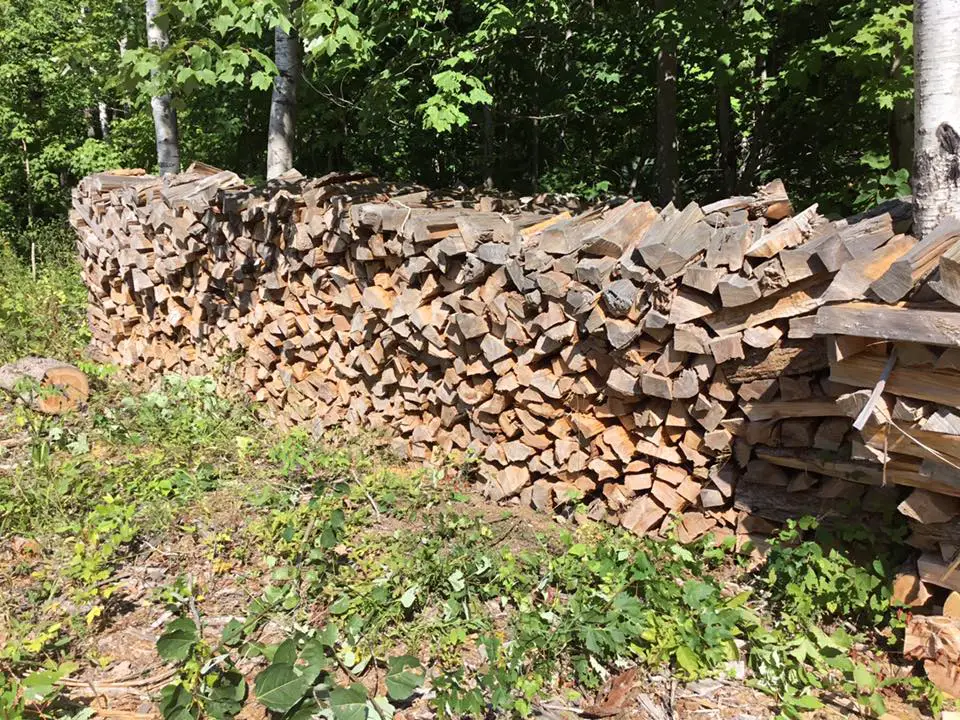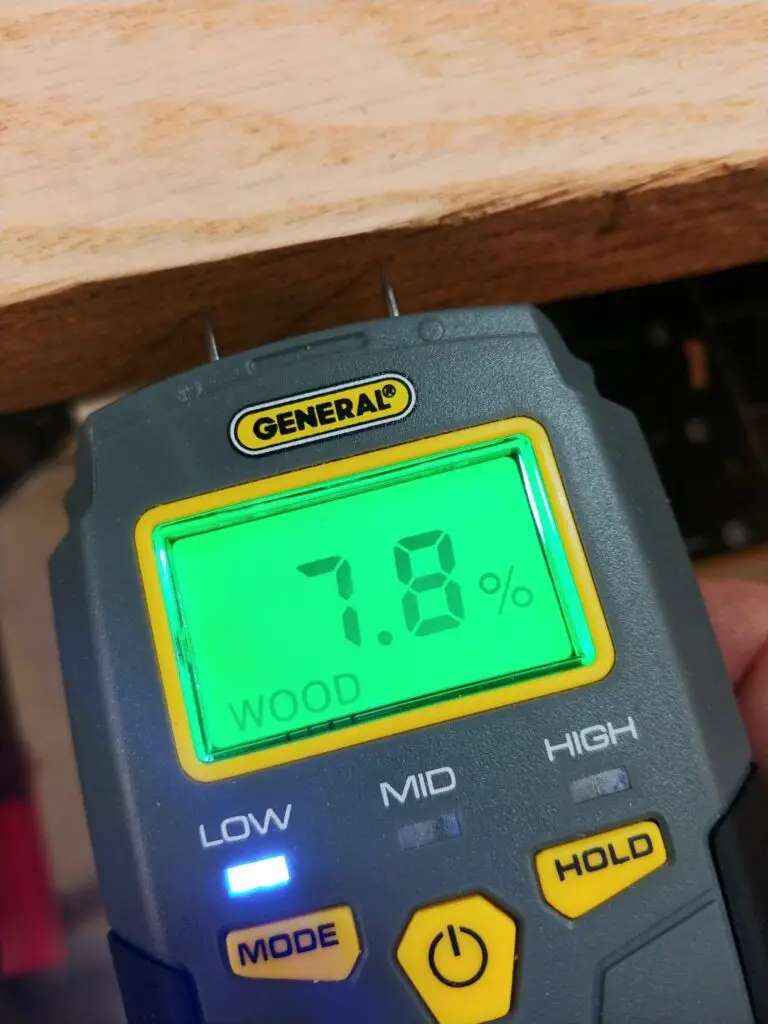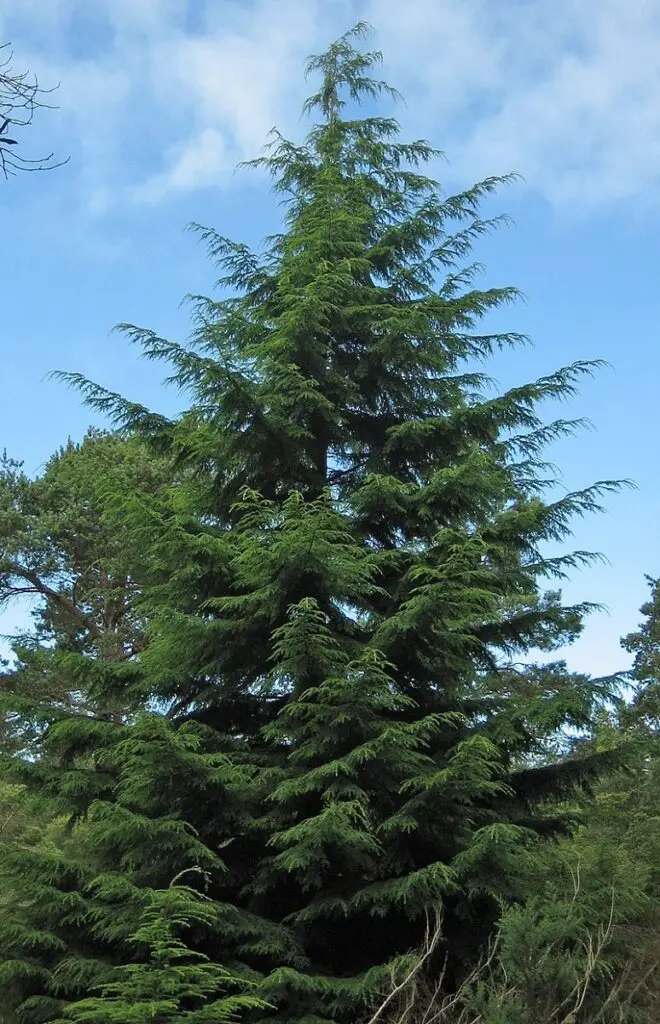Hemlock is a good choice for firewood. Hemlock is a soft wood, like pine or fir; as such, it doesn’t produce the heat you get from hardwoods like oak or maple. However, hemlock burns cleanly, seasons quickly, and produces little smoke or coals.
Hemlock is abundant throughout the country, so its price and availability are great. The smell of burning hemlock is pleasant and sweet. Hemlock tends to pop and crackle in the fire, so it’s a good choice for indoor fireplaces. Unlike many other softwoods, hemlock doesn’t produce a lot of creosote when burned.
Table of Contents
Summary
- Heat Production: 15.3 million BTU/cord
- Weight: 3,600 lb/cord
- Seasoning Time: 7-12 months
- Splitting Difficulty: Easy
- Sap Content: Medium
- Smoke: Low
- Smell: Pleasant, aromatic
Some varieties of hemlock have a higher BTU rating than others; Mountain Hemlock can produce up to 20 million BTU/cord. Most hemlock, though, has a BTU rating in the mid-to-high teens.
Hemlock is part of the pine family, so it smells and burns like other pine trees. However, it separates hemlock from other pine species, with its comparatively low sap content and quick seasoning time. Hemlock gets down to 20% moisture, or lower, with a year of seasoning.

Heat Production
Hemlock generally produces heat of around 15.3 million BTU/cord. This is not a hot burning wood, but some varieties of hemlock can put out as much as 20 million BTU/cord. Even with a lower heat rating, hemlock burns long and clean, which makes it ideal to use mixed with other hardwoods, or during times of the year when temperatures aren’t as cold as the dead of winter.
Hemlock doesn’t generate a large base of coals, which is another reason it’s best used when you don’t need a very hot fire.
Smoke Generation
If burned when it’s properly seasoned, hemlock doesn’t produce a ton of smoke. Since hemlock is a type of pine, it burns like other pine woods. Hemlock will pop and crackle when burning, so that should be considered when burning in an outdoor firepit. Hemlock has a pleasant, aromatic pine scent when burned.
As always, you shouldn’t burn any wood indoors without proper ventilation.
Seasoning Time
Hemlock seasons quickly. It can take as few as seven months to get down to 20% moisture. Often, hemlock becomes seasoned between seven to twelve months. If you burn this wood when it’s green, you’ll have a lot of smoke and creosote buildup.
You’ll need a moisture meter to determine when your hemlock is ready to burn. These are fairly inexpensive items that you can buy at most hardware stores. A moisture meter is a quick way to check that your firewood is down to 20% moisture, or lower, before burning.
I personally recommend this General Tools Moisture Meter. It allows you to accurately gauge how wet your firewood is and whether it is sufficiently seasoned. Over time you can also see how quickly the moisture is dropping and how much longer you need to keep your firewood dropping until it is seasoned and ready to burn.
Press the sharp pins into the wood and you will quickly see the readout show the moisture ranging from 5% to 50%. It also has a Low/Mid/High indication depending on whether the wood is dry enough, so you don’t need to remember the actual values.

Burning Smell
Hemlock has a pleasant, aromatic pine smell when burned. Since hemlock is a type of pine tree, expect a similar smell and smoke from hemlock that you find in other pine woods. The smell will be stronger if you burn this wood when it’s not seasoned. However, Hemlock doesn’t have as high a sap content as other pine woods, so that the smell won’t be as pungent.
If yo are especially interested in the burning smell of firewood for smoking meat, or if you are sensitive to odor, you may enjoy this guide I have put together.
Creosote Buildup
Creosote is a black ash that’s mostly unburnt wood particles. Softwoods create creosote because they don’t burn hot enough to burn every wood particle in the fire completely. Creosote builds up in fireplaces, stoves, and chimneys, which is a safety hazard since creosote is combustible. Too much creosote buildup could mean looking at a potential fire in your chimney.
Even though hemlock is a soft wood, it generates less creosote than other softwoods. This is due to its low sap content compared to other pine types. If you season it properly, the creosote production from hemlock will be minimal.
Splitting Difficulty
Hemlock grows to about 100 feet tall and gets fairly thick through its trunk. Hemlock also grows with a smooth, straight grain, which means it’s easy to split. Again, since hemlock is a type of pine, expect it to split similar to other pine woods that you’ve used for firewood. However, since hemlock has a low sap content, it won’t make the mess that other pines do when splitting.
Different Types/Species
There are a few different types of hemlock. The most common you’ll find are Eastern, Western, and Mountain.
Eastern and Western hemlock have a low BTU, and behave similarly when burned. Mountain hemlock has a higher BTU rating, reaching nearly 20 million BTU per cord. That’s on par with some hardwoods. If you can find it, Mountain hemlock is the ideal type to use as firewood. All types of hemlock have a low sap content and produce few coals when burning. They all produce the same smell and amount of smoke, too.
Hemlock trees grow large and are found in forests across the country. They can reach 100 feet tall, so the firewood yield per tree is high. Thanks to its abundance, hemlock is available in most markets.

Comparison to Other Woods
Hemlock compares favorably to other softwoods and even rivals some hardwoods like maple. Hemlock is an excellent choice for kindling or use in fires when you don’t need something very hot. Hemlock is an ideal softwood for indoor fires thanks to its low creosote creation.
Let’s take a look at how hemlock compares directly to other wood.
| Firewood | Million BTU/Cord (source) | Ease of Splitting | Coals | Overall Quality |
| Hemlock | 15.3 million | Easy | Poor | Good |
| Maple | 25 | Easy | Excellent | Excellent |
| Bur oak | 26 | Easy | Excellent | Excellent |
| Black ash | 17.9 | Easy | Good | Excellent |
While most hemlock wood doesn’t have a high BTU rating, Mountain hemlock can put out up to 20 million BTU per cord. Its low sap content and ease of splitting make hemlock a good choice for kindling for indoor and outdoor fires.
Frequently Asked Questions
Can you burn hemlock in a firepit outdoors?
Yes, hemlock is a great choice for use in outdoor firepits. Hemlock has a sweet, aromatic pine scent when burned. It produces little smoke, although it does pop and crackle. Hemlock is great for kindling or the main log in your fire.
Is it safe to burn hemlock in a fireplace indoors?
Yes, hemlock is good firewood for indoor use. Hemlock produces very little creosote, making it safe for indoor fireplaces and stoves. As always, ensure that you have proper ventilation in place before burning anything indoors.
How much does it cost to buy hemlock firewood?
Hemlock runs about $220 per cord, comparable to other pine and hardwood mixes.
Conclusion
Hemlock is a great firewood choice. It burns cleanly, even if it doesn’t produce a lot of coals. Hemlock doesn’t produce much smoke or creosote, making it a great choice to burn indoors. It’s easy to find, affordable, and splits easily. One type of hemlock – Mountain – can burn up to 20 million BTU per cord. Whether you use it as kindling, or as the main logs in a fire, hemlock is safe, dependable firewood that produces a decent amount of heat. It’s best used during the shoulder seasons when the temperatures aren’t as cold as in the dead of winter.
